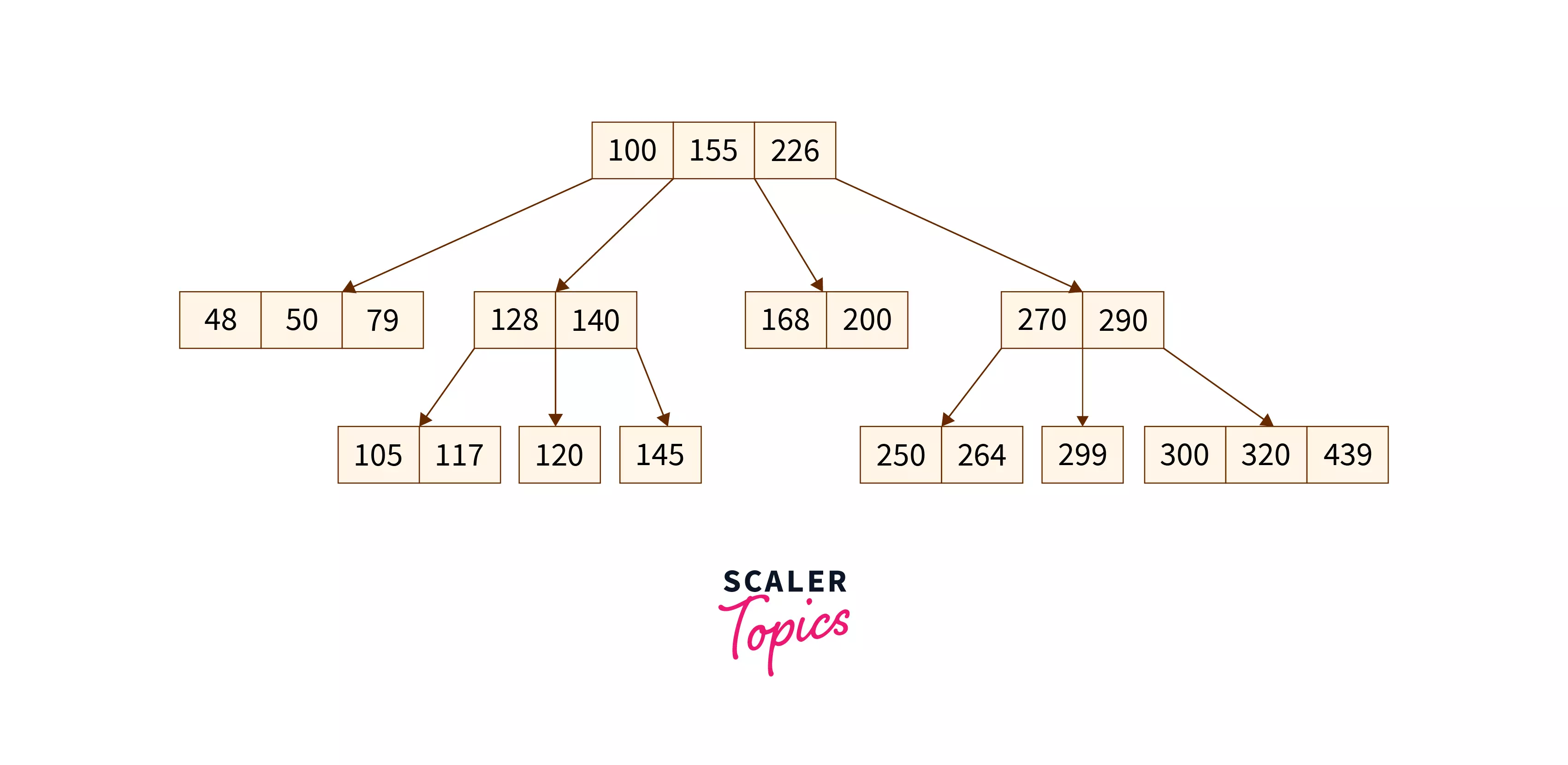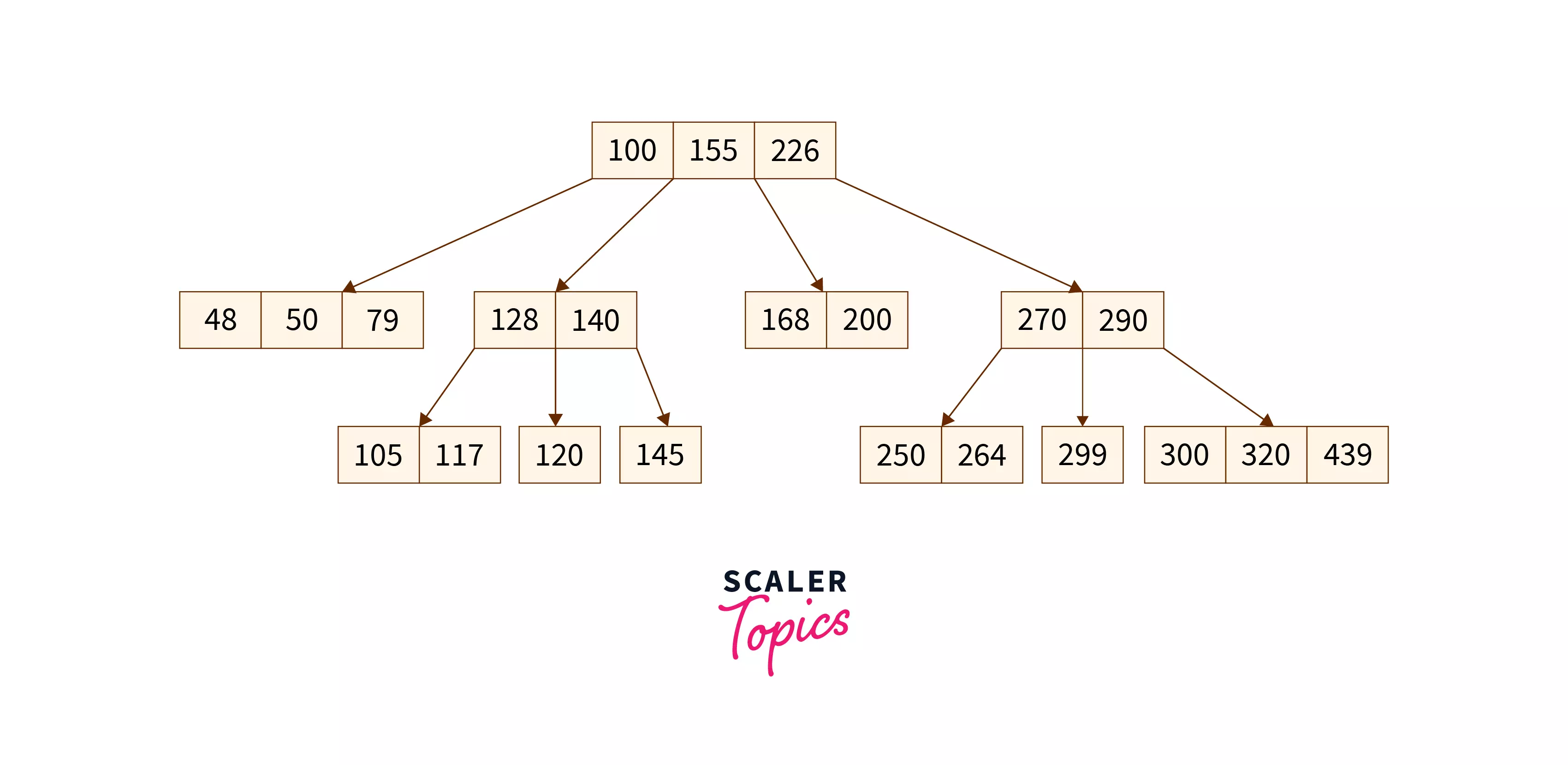B Tree in DBMS
Video Tutorial
Overview
Indexing is the first thing that comes to mind when we consider a database's performance. In this article, we'll know about B-trees and how database's indexing using B-tree in DBMS can improve the databases' performance.
An m-way tree that self-balances itself is called a "B-tree." Due to their balanced structure, such trees are frequently used to manage and organise enormous databases and facilitate searches. In a B-tree, each node can have a maximum of m child nodes.
Scope
In this article we will cover below topics :
- First, we will define B-tree
- Then we will see what is the need of B-tree in DBMS
- Then we know how Database B-Tree Indexing Works
- Lastly we will look at some examples of B-tree in DBMS
Definition of B-tree
B-tree in DBMS is an m-way tree which self balances itself. Due to their balanced structure, such trees are frequently used to manage and organise enormous databases and facilitate searches. In a B-tree, each node can have a maximum of n child nodes. In DBMS, B-tree is an example of multilevel indexing. Leaf nodes and internal nodes will both have record references. B-Tree is called Balanced stored trees as all the leaf nodes are at same levels.

Properties of B-tree
Following are some of the properties of B-tree in DBMS:
- A non-leaf node's number of keys is one less than the number of its children.
- The number of keys in the root ranges from one to (m-1) maximum. Therefore, root has a minimum of two and a maximum of m children.
- The keys range from min([m/2]-1) to max(m-1) for all nodes (non-leaf nodes) besides the root. Thus, they can have between m and [m/2] children.
- The level of each leaf node is the same.
Need of B-tree
- For having optimized searching we cannot increase a tree's height. Therefore, we want the tree to be as short as possible in height.
- Use of B-tree in DBMS, which has more branches and hence shorter height, is the solution to this problem. Access time decreases as branching and depth grow.
- Hence, use of B-tree is needed for storing data as searching and accessing time is decreased.
- The cost of accessing the disc is high when searching tables Therefore, minimising disc access is our goal.
- So to decrease time and cost, we use B-tree for storing data as it makes the Index Fast.
How Database B-Tree Indexing Works
- When B-tree is used for database indexing, it becomes a little more complex because it has both a key and a value. The value serves as a reference to the particular data record. A payload is the collective term for the key and value.
- For index data to particular key and value, the database first constructs a unique random index or a primary key for each of the supplied records. The keys and record byte streams are then all stored on a B+ tree. The random index that is generated is used for indexing of the data.
- So this indexing helps to decrease the searching time of data. In a B-tree, all the data is stored on the leaf nodes, now for accessing a particular data index, database can make use of binary search on the leaf nodes as the data is stored in the sorted order.
- If indexing is not used, the database reads each and every records to locate the requested record and it increases time and cost for searching the records, so B-tree indexing is very efficient.
How Searching Happens in Indexed Database?
The database does a search in the B-tree for a given key and returns the index in O(log(n)) time. The record is then obtained by running a second B+tree search in O(log(n)) time using the discovered index. So overall approx time taken for searching a record in a B-tree in DBMS Indexed databases is O(log(n)).
Examples of B-Tree
Suppose there are some numbers that need to be stored in a database, so if we store them in a B-tree in DBMS, they will be stored in a sorted order so that the searching time can be logarithmic.
Lets take a look at an example:
 The above data is stored in sorted order according to the values, if we want to search for the node containing the value 48, so the following steps will be applied:
The above data is stored in sorted order according to the values, if we want to search for the node containing the value 48, so the following steps will be applied:
- First, the parent node with key having data 100 is checked, as 48 is less than 100 so the left children node of 100 is checked.
- In left children, there are 3 keys, so it will check from the leftmost key as the data is stored in sorted order.
- Leftmost element is having key value as 48 which match the element to be searched, so thats how we the element we wanted to search.
Learn more
You can learn more about B-tree in DBMS:
Conclusion
- An m-way tree that self-balances itself is called a “B-tree”.
- Due to their balanced structure, such trees are frequently used to manage and organise enormous databases and facilitate searches.
- B-tree is an example of multilevel indexing.
- Use of B-tree is needed for storing data as searching and accessing time is decreased.
- B-trees can be used for database indexing to improve searching and storing time of database.
- While using B-tree, database can make use of binary search on the leaf nodes as the data is stored in the sorted order.

